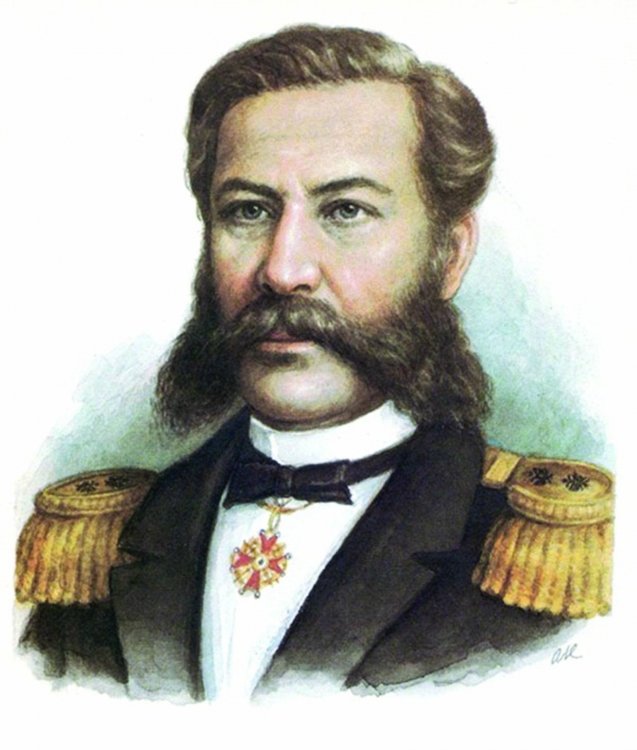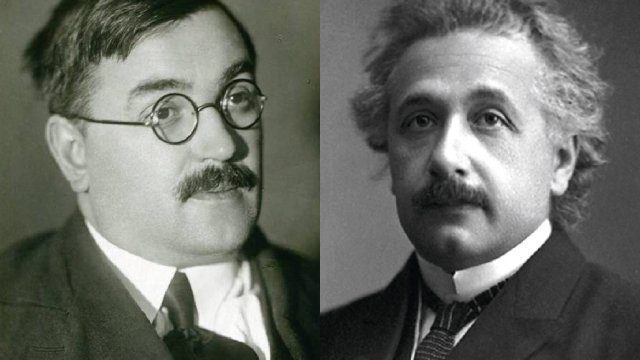Official:
Alexander Fedorovich Mozhaysky. 9 (21) March 1825 — 20 March (1 April) 1890. Inventor, aviation pioneer, built the first airplane.
Life and Work:
1. “A strong earthquake in 1855 caught the Russian frigate Diana off the coast of Japan. She was destroyed by a giant wave and sank. The crew managed to survive. The Russian sailors asked for permission to purchase material and hire carpenters to build a small schooner to return to their homeland ... The drawings that were used to build the first keel ship in Japan were made by the hand of a Russian naval officer Mozhaysky.” The Russian naval officer Mozhaysky, described in Vsevolod Ovchinnikov’s book A Branch of Sakura, is famous not for his naval designs. Alexander Fedorovich is famous for being the first in Russia to teach planes how to fly.
2. Russian inventor Alexander Mozhaysky was born on March 21, 1825 in Rochensalme, now the city of Kotka in Finland. The place is not surprising — the Mozhaysky family gave the Russian Navy several generations of sailors. His father Fedor Timofeyevich served in the naval crew in Vyborg province. The commander of the port of Rochensalme became the godfather of the newborn.
3. Maybe that’s why the name of the projectile that Mozhaisky invented has the word “nautics”, although it has nothing to do with the sea. A hereditary sailor, a graduate of the Marine Corps, an officer who rose to the rank of rear admiral, was obsessed with the dream of building a “projectile for aeronautics.”
4. But before he started this construction, the future rear admiral sailed freely on the seas and oceans, participated in the Khivan campaign, studied and described the Aral Sea and the Amu Darya River.
5. In 1860, Mozhaysky was seconded to Vologda from the navy to carry out the emancipation reform. In Vologda, he married and settled in his wife’s estate in the village of Kotelnikovo, 12 kilometers from the provincial center. Now this small village is named after Mozhaysky.
6. After the Crimean War, Russia reduced the Navy, and Mozhaisky was dismissed. It was around this time that he became interested in aeronautics. Old-timers later said that they often saw Alexander Fedorovich watching birds and flying kites.
7. After the death of his wife, Alexander Fedorovich moved to the family estate of Voronovitsa near Vinnytsia. Now it is called the cradle of Russian aviation – it was there that Mozhaysky worked on the idea of an aircraft for several years.
8. In 1876, Mozhaysky returned to St. Petersburg and began to embody the dream in drawings and models. Three years later, he was returned to the Navy and sent to teach in the Naval Cadet Corps. All this time, he continued to work on the project, consulting with the leading Russian scientists.
9. Alexander Fedorovich studied the structure of bird wings, the work of propellers, flight dynamics, and experimented with kites. He rejected the idea of flapping wings immediately and built models of fixed wing aircraft. His models could fly.
10. The military department considered Mozhaysky’s experiments too expensive and untimely, and the amount of 18,895 rubles he required to continue the work was deemed too large by the special commission.
11. Mozhaysky began works with his own money. He had to sell his estates and belongings down to wedding rings and tableware. By the way, he was very much helped by the famous Mikhail Dmitrievich Skobelev, the hero of the Russian-Turkish war.
12. On November 15, 1881, captain of the first rank Mozhaysky received the first privilege in Russia, or, in modern terms, a patent for an “air-flying projectile”. The same year, he began to build an airplane with two steam engines. The engines turned out not powerful enough, and the first flight failed. Mozhaysky continued his aeronautical experiments, but he ran out of money.
13. But he still managed to fly, even if it was not a plane but a kite — three horses pulled a cart with a rope attached to it, and a kite designed by Mozhaysky took off Together with its designer who was attached to it with a special device.
14. The memory of the aviation pioneer is perpetuated in the name of the formula, which allows you to approximately find the take-off mass of an aircraft, based on its operational, structural or flight properties.
15. The monument to Mozhaisky is in Krasnoye Selo where a site was once allocated for the construction and testing of the aircraft. In 1950, the village of Duderhof, the Leningrad Region, where this site was located, was renamed Mozhaysky.






















